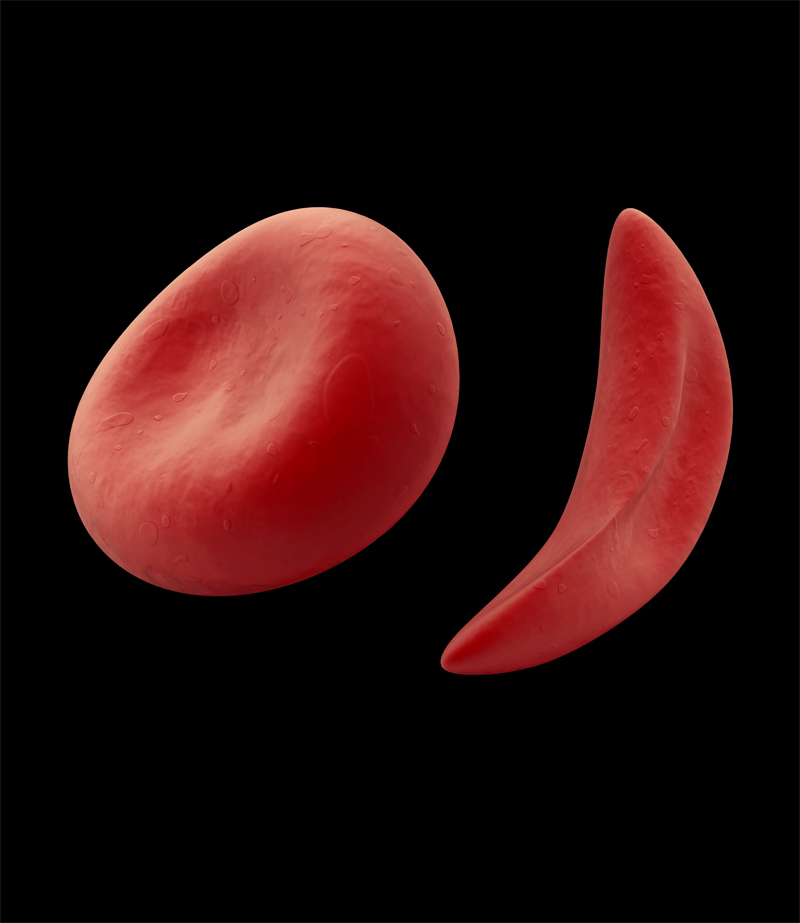1949
Molecular Disease
Linus Carl Pauling (1901–1994), James Van Gundia Neel (1915–2000), Harvey Akio Itano (1920–2010), Vernon Ingram (1924–2006), Seymour Jonathan Singer (b. 1924)
Links between some genetic mutations and disease are now taken for granted, but American chemist Linus Pauling and his coworkers—including American cell biologist Seymour Jonathan Singer and American chemist Harvey Akio Itano—were the first to establish the concept. Pauling’s 1949 paper was titled “Sickle Cell Anemia, a Molecular Disease,” and in that same year, American geneticist James Van Gundia Neel showed the disease’s inheritance pattern in human beings.
Geneticists had shown that entire enzymes could appear and disappear via genetic defects, but Pauling and colleagues took the idea a step further. People with sickle cell anemia have an altered form of hemoglobin, the oxygen-carrying protein in red blood cells. Mutant hemoglobin has reduced oxygen capacity and twists the cells into the characteristic sickle shape. (It also confers some resistance to malaria, as later research showed, which helps explain why the condition has persisted in tropical populations.)
Pauling’s student Itano eventually determined that the altered protein had a tiny difference in charge at different pH values, which allowed it to be separated from regular hemoglobin by careful electrophoresis (a technique in which proteins are made to move through a gel matrix under the influence of a strong electrical voltage difference). Once protein sequencing and other techniques became available, German-American biologist Vernon Ingram found, in 1956, that a sickle cell hemoglobin has a single change: a valine amino acid is replaced by a glutamic acid, which alters the structure of an entire region of the protein.
Every human being ever born carries some of these single-point mutations, and the vast majority of them are silent and harmless. But at certain points, in certain proteins, tiny variations can kill. Pauling’s pioneering studies showed how this could work, demonstrating the application of chemistry techniques to biomolecules and helping to found the science of molecular biology.
SEE ALSO Hydrogen Cyanide (1752), Oxygen (1774), Amino Acids (1806), Sanger Sequencing (1951), Electrophoresis (1955)

“Sickled” red blood cells. The mutated hemoglobin aggregates into rodlike structures inside the cells, changing their shape.